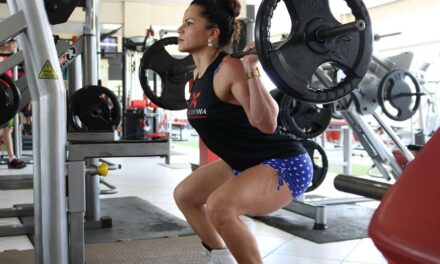Introduction: Embracing Strength at 50 and Beyond
As women cross the threshold of 50, they often find themselves at a crossroads, questioning the long-held beliefs about aging and fitness. One such belief is the misconception that after 50, women should slow down and avoid intense physical activities like strength training. Contrary to this outdated narrative, strength training for women over 50 isn’t just beneficial; it’s essential for maintaining a healthy, vibrant lifestyle.
The golden years can indeed be some of the most fulfilling and active years of a woman’s life, and strength training plays a pivotal role in this chapter. It’s not just about building muscle or enhancing physical appearance. Strength training after 50 is about empowering women to live their lives to the fullest, with more energy, strength, and confidence than ever before. It’s about combating the natural decline in muscle mass and bone density, boosting metabolism, and improving overall health and well-being.
However, embarking on a strength training journey after 50 may bring a mix of emotions – from excitement to apprehension. Questions about the safety, effectiveness, and right approach to strength training are common and valid. This article aims to dispel myths, highlight the benefits, and provide a comprehensive guide to strength training tailored for women over 50.
Through this exploration, we will delve into the world of strength training, backed by scientific research and expert insights. We will shed light on effective strategies, proper techniques, and the importance of a balanced approach to fitness. This isn’t about defying age; it’s about redefining it. So, whether you are a seasoned gym-goer or just starting out, this guide is your stepping stone to understanding and embracing the transformative power of strength training after 50.
The Essentials of Strength Training for Women Over 50
Understanding the fundamentals of strength training for women over 50 is key to harnessing its benefits safely and effectively. This age marks a transformative period, with unique physical and physiological considerations. Let’s navigate through the principles, supported by research and expert insights, to help you build a solid foundation for your strength training journey.
The Importance of Muscle Health After 50
As women age, they experience a natural decline in muscle mass and bone density, known as sarcopenia and osteopenia, respectively. A study published in the Journal of Bone and Mineral Research highlights how resistance training can significantly improve bone density and reduce the risk of osteoporosis. Moreover, maintaining muscle mass isn’t just about strength; it’s crucial for metabolic health, balance, and overall quality of life.
Customized Strength Training Approach
Strength training isn’t a one-size-fits-all solution, especially after 50. It should be tailored to individual capabilities, health conditions, and goals. Experts suggest starting with lighter weights and focusing on form and technique before gradually increasing intensity. Incorporating a mix of free weights, machines, and bodyweight exercises can provide a comprehensive workout that targets all major muscle groups.
Overcoming Hormonal Challenges
Menopause brings significant hormonal changes that can impact muscle mass and fat distribution. However, strength training can be a potent tool in managing these changes. Research indicates that regular resistance training can help balance hormones, alleviate menopausal symptoms, and aid in weight management.
The Role of Nutrition
Proper nutrition is indispensable in supporting strength training. Protein plays a crucial role in muscle repair and growth. A study in the American Journal of Clinical Nutrition suggests that higher protein intake, combined with resistance training, promotes muscle synthesis in older adults. Balanced diets rich in calcium, vitamin D, and anti-inflammatory foods also support muscle and bone health.
Combating Injuries and Ensuring Safety
One of the concerns for women over 50 is the risk of injury. To mitigate this, experts recommend incorporating flexibility and balance training, warming up properly before workouts, and listening to the body’s signals. Working with a fitness professional can also provide personalized guidance and ensure exercises are performed safely and effectively.
Consistency and Patience
Consistency in training, coupled with patience, is vital. Building strength and muscle tone doesn’t happen overnight, especially at this age. Setting realistic goals, tracking progress, and staying committed to a regular workout schedule are key to long-term success.
In summary, strength training for women over 50 involves a holistic approach that considers the unique challenges and needs of this life stage. It’s about empowering women to take control of their health and well-being through informed, safe, and effective practices. In the next section, we will summarize the takeaways and provide actionable tips to help you embark on this rewarding journey.
Empowering Takeaways for Your Strength Training Journey
As we conclude our exploration into strength training for women over 50, it’s important to distill the wealth of information into practical, actionable takeaways. These key points will serve as guiding principles to help you embrace and sustain a strength training regimen that enhances your life, health, and well-being.
1. Embrace the Journey with Confidence
First and foremost, believe in your ability to grow stronger, regardless of age. Strength training is as much about mental fortitude as it is about physical endurance. Approach your fitness journey with a positive mindset, knowing that every effort contributes to a healthier, more vibrant you.
2. Understand and Respect Your Body
Recognize the changes your body is going through and respect its limits. Adapt exercises to suit your comfort level and gradually increase intensity. Remember, it’s about progress, not perfection.
3. Prioritize Form and Technique
Proper form is crucial to prevent injuries and maximize the effectiveness of each exercise. If you’re new to strength training, consider working with a fitness professional to learn the correct techniques.
4. Diversify Your Workout Routine
Include a variety of exercises in your routine to target all major muscle groups. Combining different types of resistance training, such as using free weights, machines, and bodyweight exercises, can keep your workouts engaging and comprehensive.
5. Nutrition is a Pillar of Strength
Support your strength training with a balanced diet rich in protein, vitamins, and minerals. Stay hydrated and consider nutritional supplements if recommended by a healthcare provider.
6. Consistency Over Intensity
Regular, consistent workouts yield better and more sustainable results than sporadic, high-intensity sessions. Aim for at least two to three strength training sessions per week and track your progress.
7. Recovery is Crucial
Allocate time for adequate rest and recovery. Incorporate stretching, yoga, or other flexibility practices to enhance recovery and reduce the risk of injury.
8. Connect with a Supportive Community
Find motivation and encouragement by connecting with others who are on a similar fitness journey. Whether it’s a local gym group or an online community, sharing experiences can be incredibly rewarding.
Strength training for women over 50 is not just a pathway to physical fitness; it’s a means to reclaim and redefine what aging looks like. It’s about building not only muscle but also confidence, resilience, and a sense of empowerment that transcends the gym. As you embark on or continue this journey, remember that every step, every lift, and every squat is a testament to your strength and commitment to living your best life.






